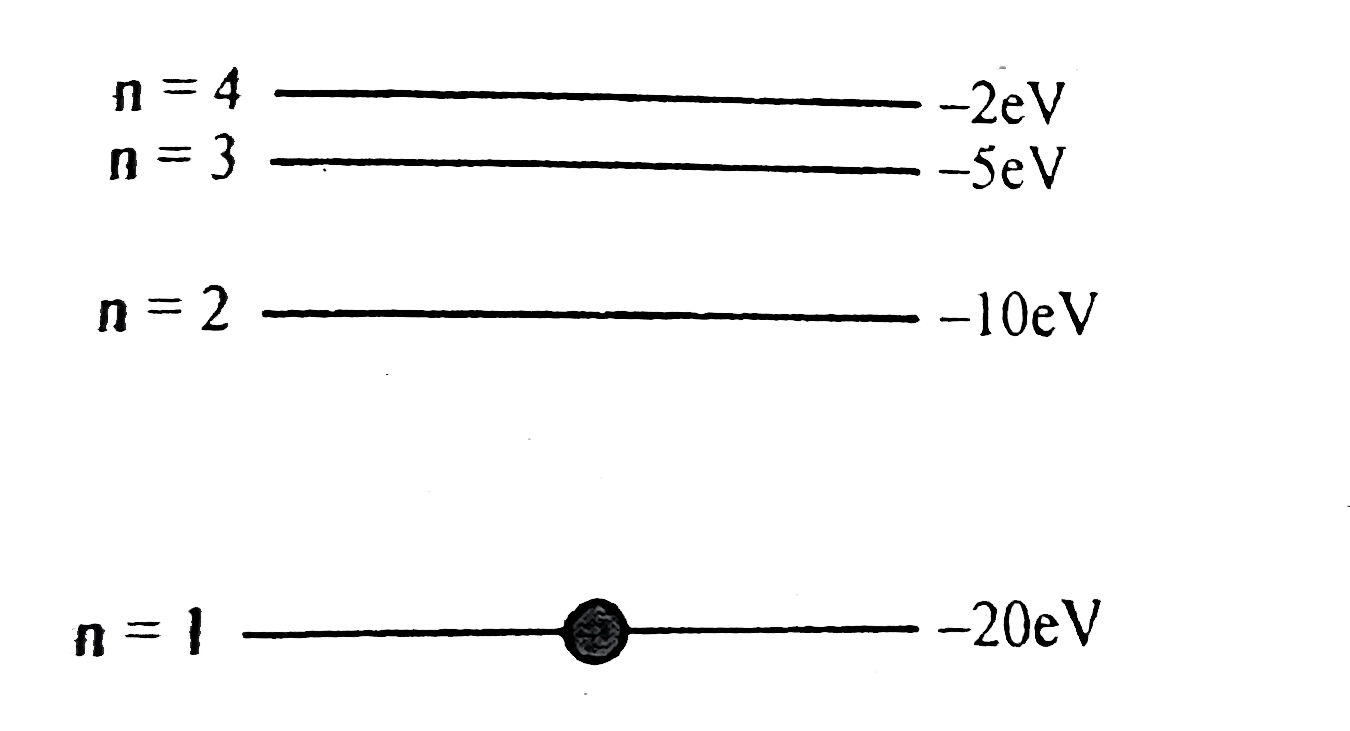As an electron is brought form an infinite distance close to the nucleus fo the atom the enrgy of the electron -nucleus system :
Increased to a grater positive value
Decreases to a smaller positiive value
Decreases to a smaller positiive value
Increased to a grater positive value
The correct Answer is:C
To solve the question regarding the energy of an electron-nucleus system as an electron is brought from an infinite distance close to the nucleus of the atom, we can follow these steps:
Step 1: Understand the Concept of Potential Energy
When an electron is at an infinite distance from the nucleus, it has a certain amount of potential energy, which we can consider as zero for convenience. As the electron moves closer to the nucleus, the potential energy of the system changes.
Hint: Remember that potential energy in electrostatics is defined as zero at infinite separation between charges.
Step 2: Analyze the Interaction Between Electron and Nucleus
The nucleus is positively charged (due to protons), and the electron is negatively charged. As the electron approaches the nucleus, the attractive force between them increases, leading to a decrease in potential energy.
Hint: Consider the nature of the forces involved; attractive forces will lower the potential energy of the system.
Step 3: Determine the Change in Energy
As the electron moves closer to the nucleus, the potential energy becomes negative, indicating that energy is released in the process. The closer the electron gets to the nucleus, the more negative the potential energy becomes.
Hint: Recall that a negative potential energy indicates a bound system, where energy is released when the system moves to a lower energy state.
Step 4: Conclude the Change in Energy
Since the energy of the electron-nucleus system decreases (becomes more negative) as the electron approaches the nucleus, we conclude that the energy of the system decreases.
Hint: Think about how energy conservation applies here; energy is released as the electron becomes bound to the nucleus.
Final Answer
The energy of the electron-nucleus system decreases as the electron is brought from an infinite distance close to the nucleus of the atom.
Correct Option: C (Decreased)
When an electron is at an infinite distance from the nucleus, it has a certain amount of potential energy, which we can consider as zero for convenience. As the electron moves closer to the nucleus, the potential energy of the system changes.
The nucleus is positively charged (due to protons), and the electron is negatively charged. As the electron approaches the nucleus, the attractive force between them increases, leading to a decrease in potential energy.
As the electron moves closer to the nucleus, the potential energy becomes negative, indicating that energy is released in the process. The closer the electron gets to the nucleus, the more negative the potential energy becomes.
Since the energy of the electron-nucleus system decreases (becomes more negative) as the electron approaches the nucleus, we conclude that the energy of the system decreases.
The energy of the electron-nucleus system decreases as the electron is brought from an infinite distance close to the nucleus of the atom.
Topper's Solved these Questions
- BOOK - P BAHADURCHAPTER - ATOMIC STRUCTUREEXERCISE - Exercise 3B19videos
ATOMIC STRUCTURE
- BOOK - P BAHADURCHAPTER - ATOMIC STRUCTUREEXERCISE - Exercise 439videos
ATOMIC STRUCTURE
- BOOK - P BAHADURCHAPTER - ATOMIC STRUCTUREEXERCISE - Exercise19videos
ATOMIC STRUCTURE
- BOOK - P BAHADURCHAPTER - CHEMICAL BONDINGEXERCISE - Exercise 711videos
CHEMICAL BONDING
Similar Questions
Electron in an atom remains static at a fixed distance from the nucleus .
View SolutionAn electron which is emitted in beta decay comes out of the nucleus. It is not one of the atomic electron revolving around the nucleus. This fact led some scientists to conjecture that electrons are constituents of the nucleus. Later this conjecture proved to be incorrect. Try to collect some arguments which show that this conjecture is indeed incorrect.
View Solution
Knowledge Check
- Question 1 - Select One
When the atomic electron is at infinite distance from the nucleus, its energy is
AinfinityBzeroCnegativeDpositive - Question 2 - Select One
The average distance of electron from the nucleus in an atom is of the order of
A1 cmB10−13cmC10−8cmD1 mm - Question 3 - Select One
The total energy of the electron revolving round the nucleus is
AzeroBless than zeroCMore than zeroDIn some atoms less thanzero and in cerain atoms more than zero
In hydrogen atom, the electron is at a distance of 4.768Ã… from the nucleus. The angular momentum of the electron is:
View SolutionWhich of the following is correct?
(i) The energy of an electron in an H atom has a negative sign for all possible orbits.
(ii) The enegry of an electron in the atom is lower than the enegry of a free electron at rest.
(iii) A free electron at rest is an electron that is infinitely far away form the nucleus and is assigned the enegry value of zero.
(iv) As the electron gets closer to the nucleus (as n decreases), En becomes larger in absolute value and more and more negative.View SolutionThe energy-level scheme for the hypothetical one electron element Bansalium is shown in figure. The potential energy is taken to be zero for an electron at an infinite distance from the nucleus.

A sample of atoms Bansalium are in all the 3 excited state shown above. What is the possible wavelength that can be emitted by atom in visible range?View SolutionIf the total enrgy fo an electron in a hydrogen linke atom in an ecited state is −3.4eV , the the de-Broglie wavelngth of the electron is :
View SolutionThe energy-level scheme for the hypothetical one electron element Bansalium is shown in figure. The potential energy is taken to be zero for an electron at an infinite distance from the nucleus.

If a Bansalium atom is in ground state, which of the following photons cannot excite the atom to a higher state?View Solution

